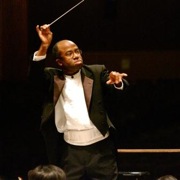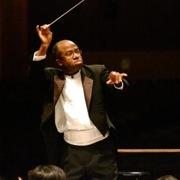Michael Morgan long ago mastered the art of making each of his Oakland East Bay Symphony performances feel like a real event, not just the latest subscription program. For Friday night’s performance at the Paramount Theatre, the sense of occasion was brought about by two substantial pieces that treat their soloists as heroic protagonists, plus a world premiere that took some stylistic turns I didn’t expect on an evening of symphonic works.

The orchestra continues to devote considerable attention to new works, and Friday night it rolled out the second installment in its New Visions/New Vistas commissioning program. Offering opportunities to composers whose careers are not focused on concert music, then pairing them with mentors who are, this is another creative step that OEBS has taken toward expanding the musical vocabulary that its audiences discover each season. For the second premiere in the series, the spotlight belonged to Double Identity, by Benedikt Brydern, a German-born film composer and jazz violinist, who was mentored by composer Laurence Rosenthal.
Drawing on several aspects of Brydern’s background, this proved to be a real crowd-pleaser, with swinging rhythms, sharply delineated orchestration, and an extremely tuneful approach. To a great extent, this music would work beautifully with film, and recalls an era when film scoring was more artful. It brought to mind the best work of jazz-inflected film composers like Henry Mancini, and the music seemed right at home in the art deco glory of the Paramount.
Written in three movements, the piece has an upbeat opening; moves to a slower, bluesier mode for the second movement; then picks up for a conclusion marked by expert counterpoint and a long, steady buildup. The one missing element that seemed made for Brydern’s piece was the roar that a big band can produce, but well-chosen brass and wind accents over some lovely string writing kept the piece moving. This was a sharp, polished performance by Morgan and the players, and special praise is due to percussionist Scott Bleaken for keeping things subtly swinging on the drum kit.
Tried, True, Troubling
More-familiar music filled the rest of the program, with somewhat mixed results. The second half was given over to Peter Ilyich Tchaikovsky’s Piano Concerto No. 1, with soloist Adam Neiman, and the old warhorse sounded fresh in this performance. This was due in no small part to the orchestra’s warm and energetic playing, some well-shaped woodwind solos, and Morgan’s youthful reading of the score.
Neiman, a marvelous young American player, shared in bringing the piece vividly to life. He has an extraordinary touch, articulating every note clearly in even the fastest passages, letting individual lines sing as they move through chordal passages, and often producing several colors at once in the thickest textures.
Richard Strauss’ sixth symphonic poem, Don Quixote, Op. 35, was a less compelling affair. There are significant challenges to making this piece work: Its sheer length, its repetitive nature, and its shifting styles of orchestration make it a challenge to hold together. Even Morgan’s unflagging energy wasn’t enough to provide a convincing through-line to the music, and the orchestra’s playing, on the whole, lacked the unity and sweep that marked the other pieces on the program.
There was some strong work from Dan Reiter, OEBS’ principal cellist, who embodied the cello’s heroic role in the piece ever more fully and offered finely sculpted passages as the piece went on. Principal viola Jim Hurley and Concertmaster Terrie Baune also contributed noteworthy performances of the work’s many solos. Altogether, though, all the forceful playing and leadership from the podium left a diffuse impression, without the work’s cohering over its substantial length.

